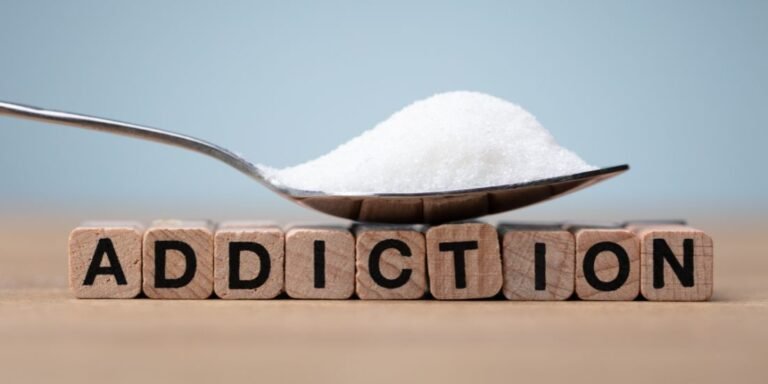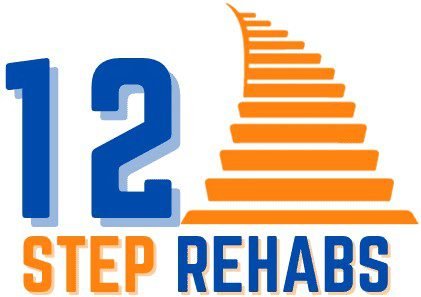Opiate and Opioid Addiction
Opiate/Opioid Addiction: Definition, Signs, Side Effects, and Treatment
Opiates and opioids addiction refers to the dependence on a class of drugs either derived from the opium poppy plant or synthesised in laboratories. These drugs include prescription painkillers like morphine, oxycodone, and hydrocodone, as well as illegal substances such as heroin. While highly effective at relieving pain, opiates and opioids are extremely addictive, often leading to opioid use disorder, a condition marked by compulsive drug use despite harmful consequences.
These substances bind to receptors in the brain and nervous system, providing not only pain relief but also intense feelings of euphoria. With repeated use, the brain becomes reliant on the drug to function normally, driving the cycle of addiction. The widespread misuse of opiates and opioids has resulted in a global public health crisis, known as the opioid epidemic, which continues to devastate individuals, families, and communities worldwide.
How Common is Opiate/Opioid Addiction?
Opiate and opioid addiction is a significant public health issue worldwide, with millions of people affected. According to a report by the United Nations Office on Drug and Crimes (UNODC), there are 60 million opioid users worldwide. Prescription opioids are a major contributor to this crisis, with many people becoming addicted after being prescribed these medications for pain. Additionally, as prescription opioids become harder to obtain, many individuals turn to illegal opioids like heroin, or synthetic opioids such as fentanyl, which are even more potent and dangerous.
Understanding the prevalence of opiate and opioid addiction is crucial for addressing its widespread impact. The addiction not only affects the health and well-being of the individual but also has broader social and economic implications. The societal costs include increased healthcare expenses, loss of productivity, and a growing burden on law enforcement and public health systems. This ongoing epidemic underscores the need for effective prevention, education, and treatment strategies.
Why are Opiates/Opioids Addictive?
Opiates and opioids are highly addictive due to their powerful effects on the brain’s reward system. When these drugs are consumed, they bind to opioid receptors in the brain and spinal cord, reducing the perception of pain and triggering the release of dopamine, a neurotransmitter associated with feelings of pleasure and euphoria. This release of dopamine creates a strong sense of well-being, which can reinforce the desire to use the drug repeatedly. Over time, the brain becomes accustomed to the presence of the drug, and larger doses are required to achieve the same effects, leading to tolerance.
As tolerance builds, individuals may take higher doses to achieve the desired effects, increasing the risk of overdose. Additionally, the brain becomes physically dependent on the drug to maintain normal function, leading to withdrawal symptoms when the drug is not present. The combination of physical dependence, tolerance, and the powerful psychological effects of opioids makes them extremely difficult to quit without professional help.
Is Opiates/Opioids Addictive from the First Try?
While not everyone who uses opiates or opioids will become addicted after the first use, the risk of addiction increases significantly with repeated use. The initial experience with these drugs can create a strong sense of euphoria, which can lead some individuals to seek out the drug again. Over time, this repeated use can lead to the development of tolerance and dependence, paving the way for addiction. Factors such as the dosage, the method of administration, and an individual’s psychological and genetic predispositions all play a role in the likelihood of developing an addiction. Even when opioids are prescribed for legitimate medical reasons, the risk of addiction remains, particularly if they are used for an extended period.
Signs of Opiate/Opioid Addiction
- Physical Signs: These include drowsiness, constipation, constricted pupils, slurred speech, and respiratory depression. Individuals may also experience frequent flu-like symptoms, weight loss, and signs of withdrawal when not using the drug.
- Psychological Signs: Opioid addiction often leads to intense cravings for the drug, anxiety, depression, and mood swings. Users may also become preoccupied with obtaining and using the drug, leading to a decline in overall mental health and cognitive functioning.
- Behavioural Signs: Behavioural changes can include neglecting responsibilities at work, school, or home, secretive or suspicious behaviour, financial difficulties due to spending large amounts of money on the drug, and engaging in illegal activities, such as doctor shopping or forging prescriptions, to obtain opioids.

Causes, Effects, and Treatments
Causes of Opiate/Opioid Addiction
Opiate and opioid addiction is influenced by a combination of genetic, psychological, social, and environmental factors:
- Genetic Factors: Genetics play a significant role in an individual’s risk of developing an addiction to opioids. Certain genetic variations can affect how the brain’s reward system responds to opioids, making some people more prone to addiction.
- Psychological Factors: Individuals with underlying mental health conditions, such as depression, anxiety, or post-traumatic stress disorder (PTSD), are at higher risk of using opioids as a form of self-medication. The temporary relief provided by opioids can quickly lead to dependency as users rely on the drug to manage their symptoms.
- Social and Environmental Factors: Social influences, such as peer pressure or exposure to environments where drug use is prevalent, can significantly contribute to the development of opioid addiction. Additionally, individuals who grow up in unstable or stressful environments, or those who have experienced trauma, are more likely to turn to opioids as a coping mechanism.
Side Effects of Opiate/Opioid Addiction
Short-Term Effects:
- Euphoria and Drowsiness: The initial rush of pleasure is quickly followed by drowsiness and lethargy, which can impair cognitive and motor functions.
- Respiratory Depression: Opioids significantly depress the central nervous system, leading to slowed or shallow breathing, which can be life-threatening.
- Nausea and Vomiting: Many users experience nausea, vomiting, and constipation after taking opioids.
Long-Term Effects:
- Respiratory Problems: Long-term use can lead to chronic respiratory issues, including respiratory arrest, which can be fatal.
- Immune System Suppression: Prolonged opioid use can weaken the immune system, making individuals more susceptible to infections and diseases.
- Mental Health Disorders: Opioid addiction is often associated with severe mental health issues, such as depression, anxiety, and increased risk of suicidal thoughts or behaviours.
- Overdose: Due to the high potency of opioids, the risk of overdose is extremely high, especially when mixed with other substances like alcohol or benzodiazepines.
Treatment Methods for Opiate/Opioid Addiction
- Rehabilitation Programs: Inpatient rehabilitation provides a safe and structured environment where individuals can detoxify from opioids and solely focus on their recovery. Studies indicate that individuals who complete residential rehab programs have a higher chance of achieving long-term sobriety compared to those in outpatient programs.
- 12 Step Model: Initially created by Alcoholics Anonymous (AA), this approach has become integral to many addiction recovery programs, such as Narcotics Anonymous (NA). It has earned recognition worldwide as one of the most effective strategies for tackling addiction. The program guides participants through self-reflection, acknowledging past mistakes, making amends, and fostering spiritual development. Recognising that addiction is a lifelong struggle, it offers ongoing support through 12 Step meetings globally, helping individuals establish a lasting support system that extends beyond formal treatment.
- Cognitive Behavioural Therapy (CBT): CBT is an evidence-based approach that helps individuals understand and change the thought patterns and behaviours that contribute to their opioid use. By addressing the underlying psychological issues that lead to addiction, CBT can be a vital component for long-term recovery.
- Aftercare Programs: Ongoing support after the initial treatment phase is essential for preventing relapse. Aftercare programs may include continued therapy, support group meetings, and sober living arrangements, which provide a drug-free environment where individuals can rebuild their lives without opioids.
How is Opiate/Opioid Withdrawal/Overdose Treated?
Opiate/Opioid withdrawal is managed with medical supervision, often using medications like methadone or buprenorphine to ease symptoms and reduce cravings. Supportive care includes hydration, nutrition, and psychological support. Gradual tapering down of the opioid dose can also be used.
In an overdose, naloxone is administered to reverse the effects. Immediate medical attention is crucial as multiple naloxone doses may be needed, and the person may require breathing support. After stabilization, close monitoring is necessary to prevent re-overdose, followed by referral to addiction treatment programs to address the underlying substance use disorder.
How Can You Help a Person with Opiate/Opioid Addiction?
Supporting someone with opiate or opioid addiction is challenging but crucial for their recovery. Here are some steps you can take:
- Encourage Open Communication: Approach the person with compassion and empathy. Express your concerns in a non-judgmental way, and let them know that you are there to support them through their journey to recovery.
- Educate Yourself: Understanding opioid addiction, including its signs, symptoms, and treatment options, can help you provide informed support. Being knowledgeable about the addiction will also make it easier for you to offer guidance and encouragement.
- Suggest Professional Help: Overcoming opioid addiction is incredibly difficult without professional assistance. Encourage the person to seek help from addiction specialists, counsellors, or rehabilitation programs that can offer the resources and support needed for recovery.
- Explore Treatment Options Together: Help the person explore available treatment options, including medications, counselling, inpatient or outpatient rehab, and aftercare programs. Offering to accompany them to appointments or meetings can provide additional moral support.
Taking the first step towards recovery from opioid addiction can be daunting, but with the right support and resources, it is possible. At 12 Step Rehabs, we’re dedicated to identifying the treatment that aligns with your specific needs or those of your loved one. With over 25 years of shared sobriety and personal recovery experience, our compassionate team is here to guide you at every step. Begin your path to a healthier, sober life by booking a free consultation today.

